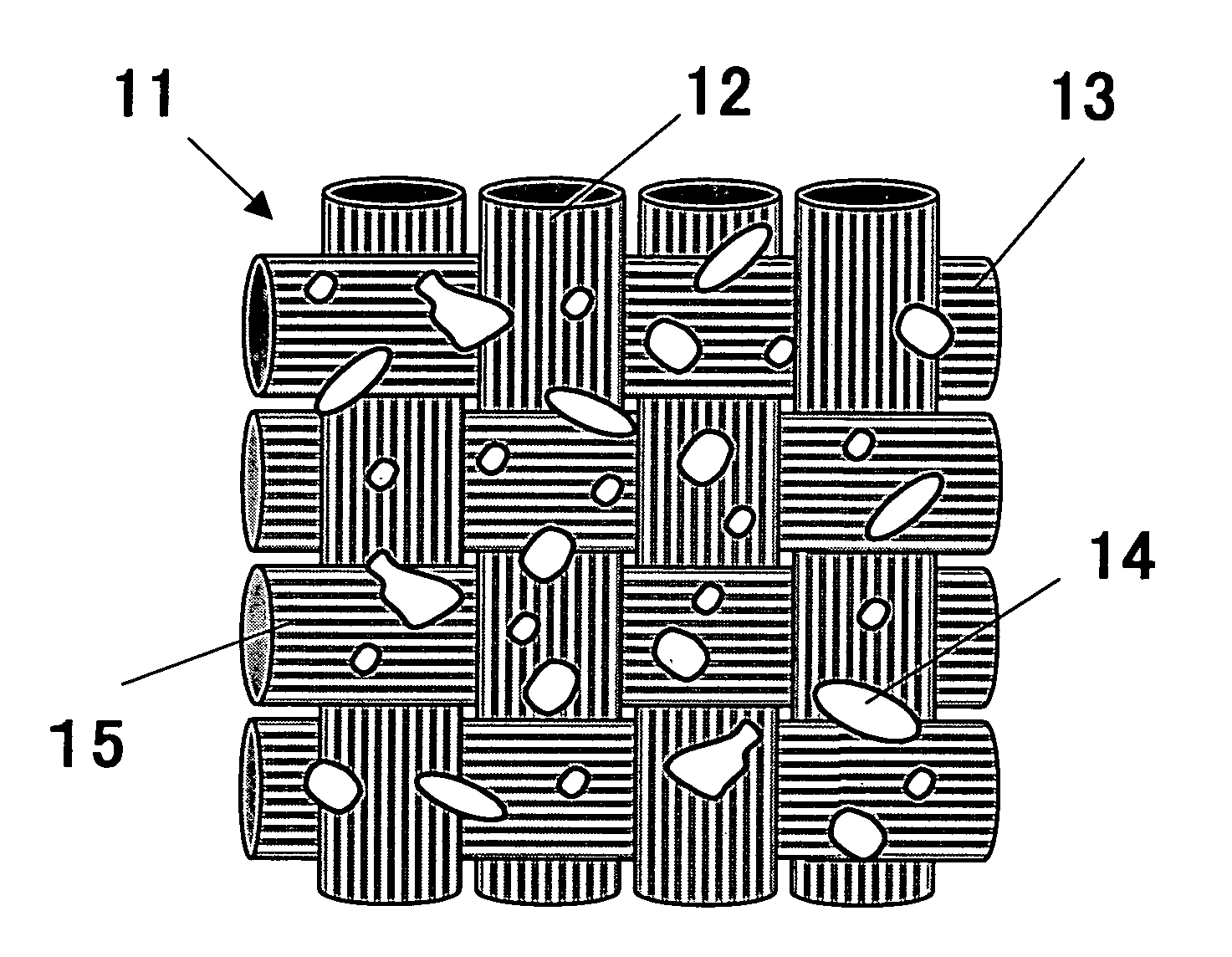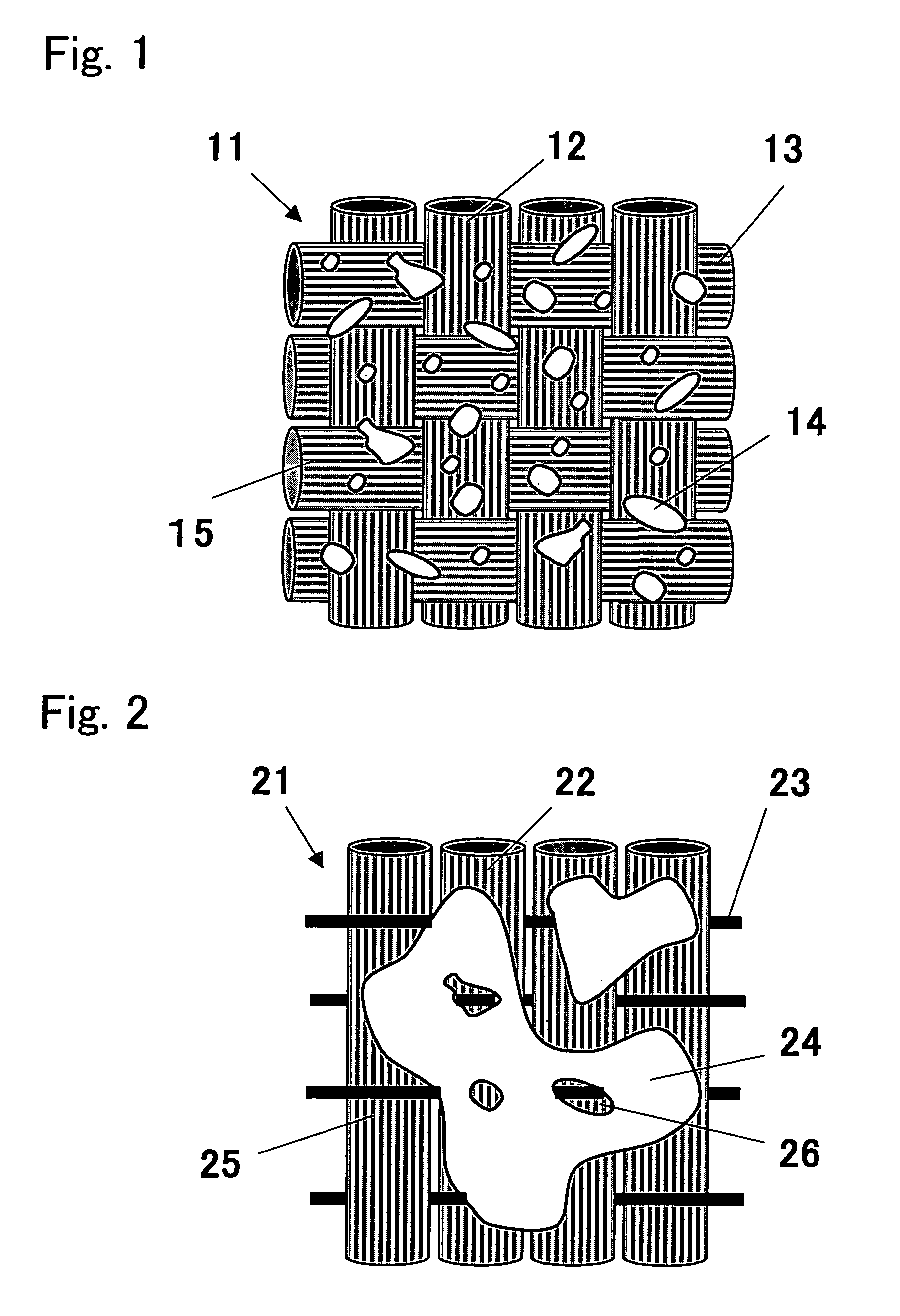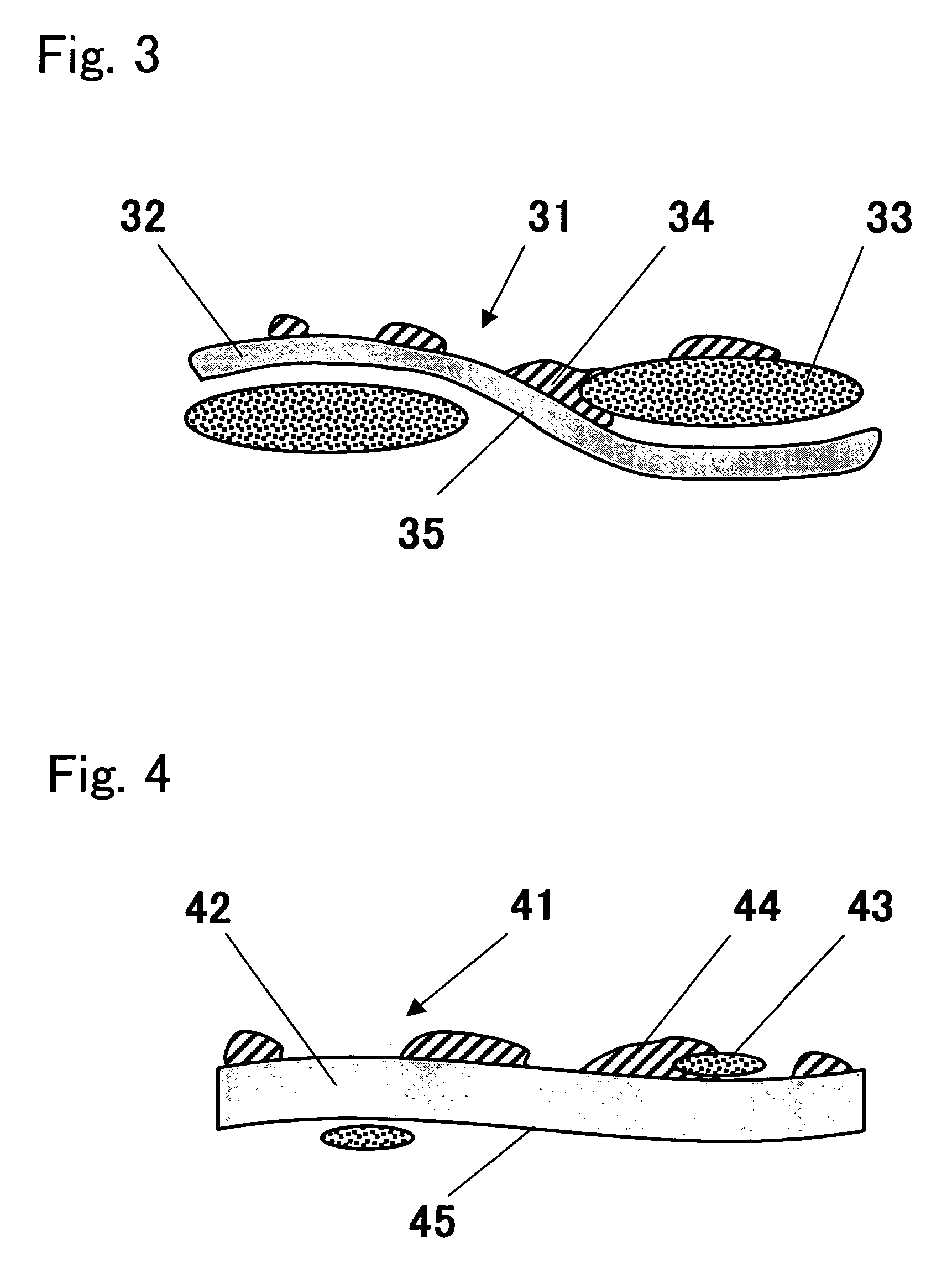Carbon fiber reinforced base material, preform and composite material comprising the same
a technology of carbon fiber reinforced base material and preform, which is applied in the direction of synthetic resin layered products, textiles and paper, printing, etc., can solve the problems of composite using preform, too stiff to be drapable, and high cos
- Summary
- Abstract
- Description
- Claims
- Application Information
AI Technical Summary
Benefits of technology
Problems solved by technology
Method used
Image
Examples
example 1
[0208]The first resin A was freeze-crushed into particles. The average particle size D50 of the particles was 124 μm.
[0209]Using the carbon fiber bundles A as warp yarns and glass fiber bundles as auxiliary weft yarns, a uni-directional woven fabric A was formed. The woven fabric A was a plain weave, and had a thickness of 0.3 mm, a carbon fiber unit weight of 295 g / m2, 2.8 warp ends / cm and 3 weft ends / cm. The obtained uni-directional woven fabric A was 3.5 mm in the width of each carbon fiber bundle used as a warp yarn and more than 10 in the ratio of the width to the thickness of the carbon fiber bundle, and was a flat woven fabric. Before weaving, each of the carbon fiber bundles A had a width of 5.8 mm and a thickness of 0.15 mm.
[0210]The particles of the first resin A were allowed to naturally drop to coat the obtained uni-directional woven fabric A through a vibration net for uniform dispersion, while they were weighed using an emboss roll and a doctor blade. In this coating, ...
example 2
[0211]Fifty parts by weight of the first resin B and 50 parts by weight of the second resin were melt-kneaded at 170° C. using a kneader, and freeze-ground, to obtain particles consisting of both the resins integrated. The average particle diameter D50 of the particles was 38 μm. The second resin was not molten or did not flow at the flow initiation temperature of the first resin B, and both the resins were not compatible with each other.
[0212]The obtained particles were electrically charged using “Tricomatic (R)” II powder coating system produced by Nordson Corporation, while being uniformly dispersed by means of compressed air, to be applied to the uni-directional woven fabric A obtained as described in Example 1. In this coating, 100 parts by weight of the woven fabric were coated with 14 parts by weight of the particles. Furthermore, the coated fabric was heated in a range from 140 to 160° C., using a hot press roller, for letting the particles adhere to the uni-directional wove...
example 3
[0213]The carbon fiber bundles A were used as warp yarns, and glass fiber bundles were respectively covered with a nylon yarn with a low melting point (“Elder” produced by Toray Industries, Inc., 6 tex) for use as auxiliary weft yarns, to form a uni-directional woven fabric C. The woven fabric C was a plain weave, and had a thickness of 0.26 mm, a carbon fiber unit weight of 193 g / m2, 1.8 warp ends / cm and 3 weft ends / cm. The woven fabric C was 5.5 mm in the width of each carbon fiber bundle used as a warp yarn and more than 20 in the ratio of the width to the thickness of the carbon fiber bundle, and was a woven fabric flatter than the uni-directional woven fabric A of Example 1. A carbon fiber reinforced substrate C was obtained as described for Example 1, except that the woven fabric C was used and that 100 parts by weight of the woven fabric C were coated with 14 parts by weight of the first resin A. The obtained carbon fiber reinforced substrate C had a thickness of 0.37 mm, an ...
PUM
| Property | Measurement | Unit |
|---|---|---|
| thickness | aaaaa | aaaaa |
| diameters | aaaaa | aaaaa |
| thickness | aaaaa | aaaaa |
Abstract
Description
Claims
Application Information
 Login to View More
Login to View More - R&D
- Intellectual Property
- Life Sciences
- Materials
- Tech Scout
- Unparalleled Data Quality
- Higher Quality Content
- 60% Fewer Hallucinations
Browse by: Latest US Patents, China's latest patents, Technical Efficacy Thesaurus, Application Domain, Technology Topic, Popular Technical Reports.
© 2025 PatSnap. All rights reserved.Legal|Privacy policy|Modern Slavery Act Transparency Statement|Sitemap|About US| Contact US: help@patsnap.com



